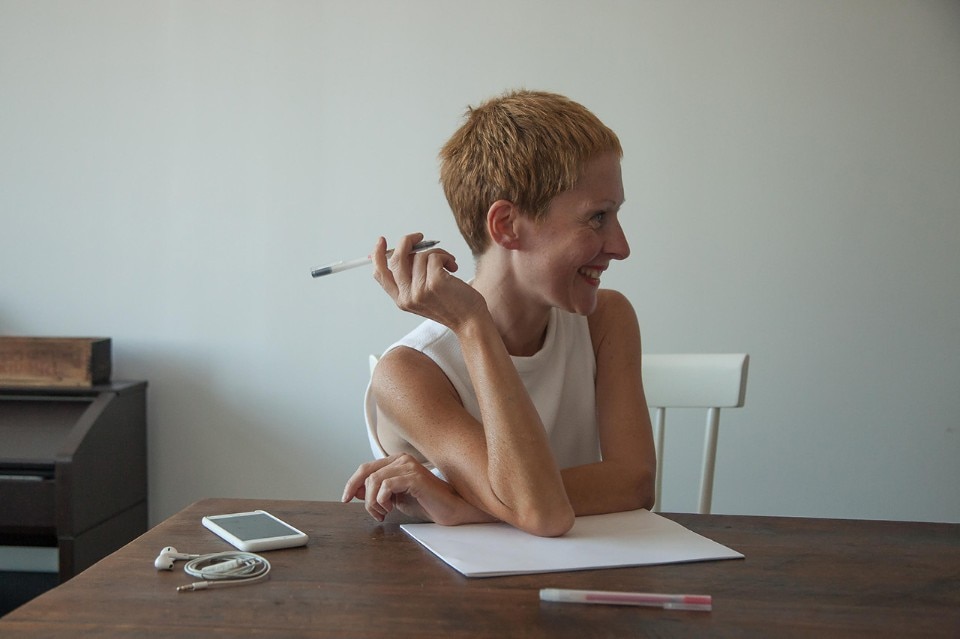“Bruises – The Data We Don’t See” is a love story which talks about platelets, medicines, bruises, petals and hope. A raw story, told by the information designer and artist Giorgia Lupi, the co-founder of the Accurat studio, together with the musician (and protagonist of the story in question) Kaki King, through a combination of music and data visualisation. It was August 2017 when Cooper, Kaki’s two-year-old daughter, was diagnosed with ITP (Immune thrombocytopenic purpura). This is a blood-based autoimmune disease which leads to the formation of bruises and wounds, with the risk of cerebral haemorrhaging. Kaki is encountering difficulty and Giorgia wanted to help, but how?
“We live in a rainbow of chaos”, said Paul Cézanne. Thanks to a process of decoding of this chaos, Giorgia and Kaki have managed to understand, visualise and in a certain sense overcome the emotions of that period, achieving catharsis. Cooper’s symptoms, collected over a period of 120 days, become signs and notes in an empathic journey. How can cold numbers be transformed into intriguing poetry? How is it possible to bring order to the fluid expressions of human nature though data? We asked Giorgia, the creator – together with Stefanie Posavec – of the Dear Data project acquired by MoMA of New York and a starting point for her theory of Data humanism.
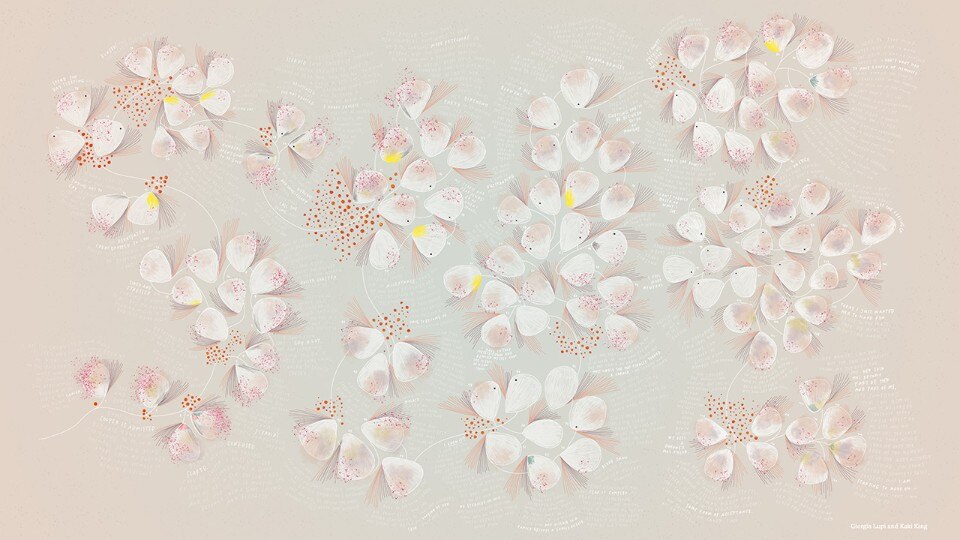
How did you manage to help Kaki in this moment of great difficulty?
I tried to understand how I could be close to her through what I know how to do, telling stories with data. Together we set up a table to record clinical data day by day, as well as the qualitative aspects of what she was going through, the emotions. Over four months of observation, Kaki managed to regain – as much as possible – control of the situation, to see a parallel between Coopers bruises and her level of stress, and to prevent anxiety and stress from putting her own health at risk, as well as her role of good parent. The collection of data also allowed her to communicate better with the doctors, and appreciate moments of joy, dedicating attention to them.
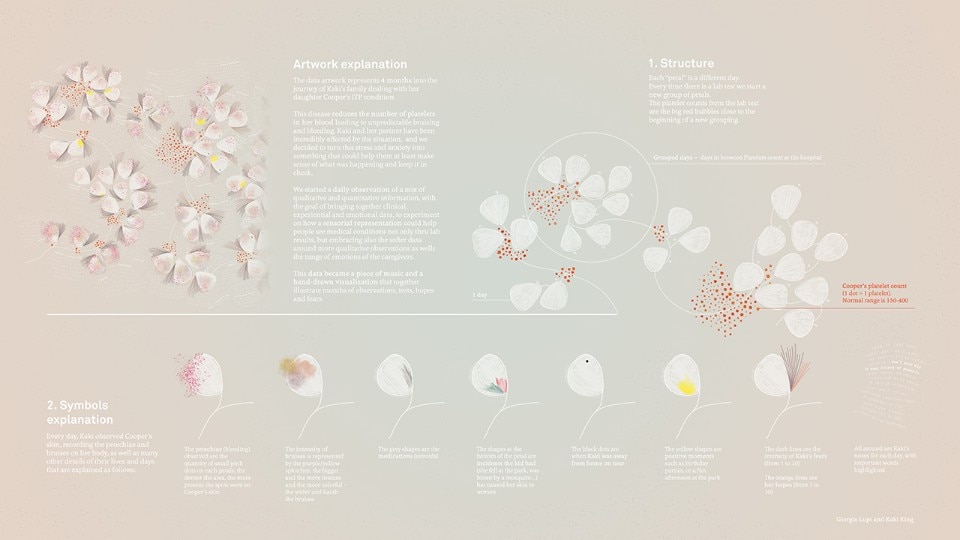
What is the power of invisible data?
We thought about how this particular reading of Cooper’s story could provide general indications for those going through similar situations and create empathy through data. It is difficult for the recording of clinical data to express the impact that the illness of a child has on their family, so we wanted to identify and communicate the missing information, the data that we usually don’t examine, looking for, and finding, almost a healing power within.
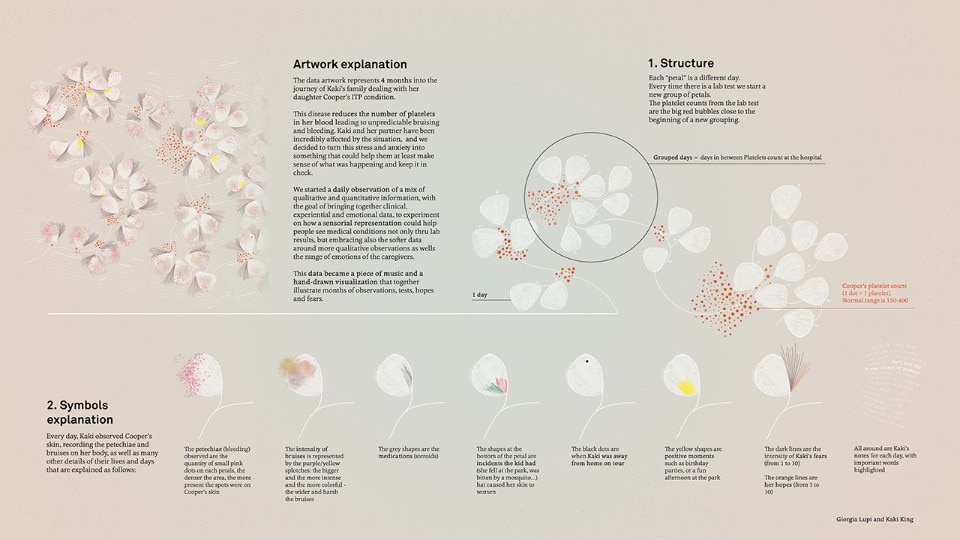
You stated that you consider data not as the answer to a question, but as the beginning of a conversation. In what sense?
We often describe data as the basis on which to make decisions. But Data-driven does not mean “unmistakably true”. I believe that the moment has come to abandon this presumption of universal truth and welcome a view of big numbers accompanied by the imperfections which contribute to describing reality. More than providing answers, data should give us cues for further questions, new and more significant ones. This also requires a change of paradigm in the way in which we represent them, including the qualitative aspects - softer, more intimate, fluid and less clear-cut.
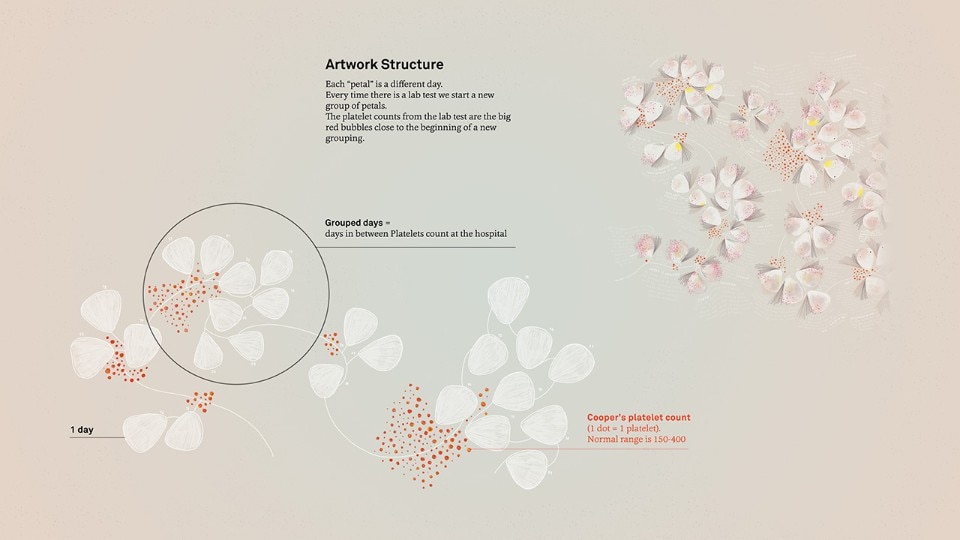
When did the data begin to talk for you?
As a child I would spend the afternoon organising my grandmother’s buttons - she was a tailor - by colour, size, number of holes, classifying them with labels. I also loved to draw, everywhere, even on the walls of my room. I studied architecture, because it appeared to combine these two needs - structure and rules, and creativity and freedom - and after my degree I experimented with interaction design, to then move towards information design. When I understood the potential of the translation of structural and non-structural data into images, rendering complex phenomenon or contexts accessible, I was sold.
In what way can data render us more human?
For a long time, we considered the world of relations, ideas and people to be in conflict with that of numbers and science. Instead, I feel that examining data from a human point of view can revolutionise whatever field they are applied to. As 14th century humanists placed attention on mankind, we should overturn views on data if we really want to make them part of our lives: this is what we call Data Humanism. I like to think that data can be a state of mind or a type of behaviour, more than a question of abilities and instruments, and they can help us to better understand ourselves, if we examine them in the right way.
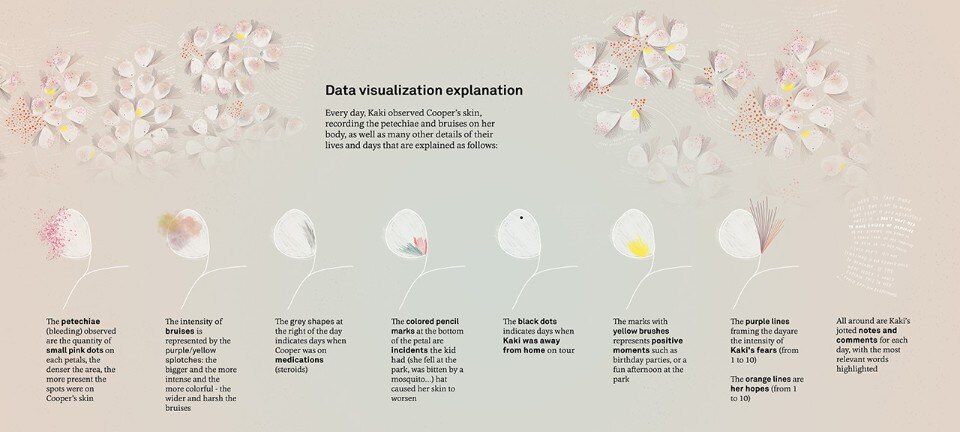
The data collected by Kaki give us access to her private life. What is your standing with regards to privacy?
For Kaki, in reality, she voluntarily chose to share personal information. In general, I believe that in order to render people more aware of the value of their data, and the ways in which they are handled, they should be allowed to visualise them. Perhaps in this way we will learn to take the regulations we sign when using a social network or information system more seriously. No choice is obligatory, it depends on us to take advantage of new technology, accepting the disadvantages.
How is Cooper?
The doctors agree that she will probably recover soon.


